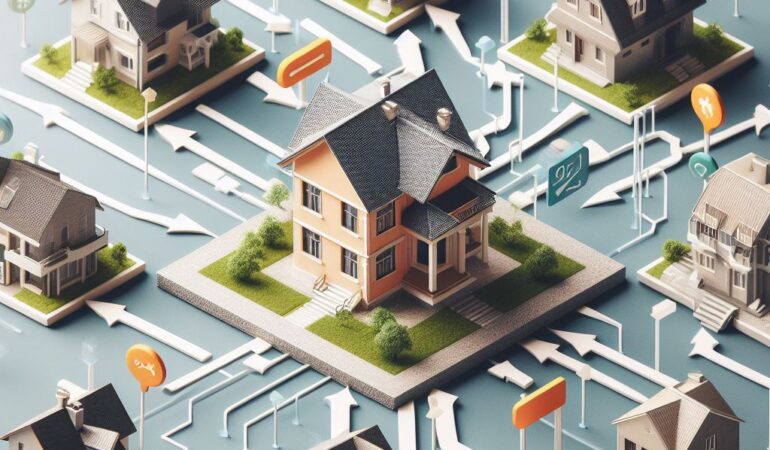You’re about to embark on a journey, where every step counts towards a successful property valuation in a 1031 exchange. Market conditions, location, physical condition, income potential, and comparable property sales are the essential factors that will guide you.
It’s time to dive into the depths of analysis and precision, as you navigate through the intricacies of property valuation.
So buckle up, because we’re about to uncover the secrets to achieving maximum value in your 1031 exchange.
Key Takeaways
- Supply and demand dynamics play a crucial role in determining property prices in a 1031 exchange.
- Location factors, such as proximity to amenities and signs of growth, can significantly impact property values in a 1031 exchange.
- The physical condition of a property, including structural integrity and the condition of plumbing, electrical, and HVAC systems, should be thoroughly evaluated in a 1031 exchange.
- Income potential, including current rental income, lease length, and occupancy rate, is an essential factor when valuing a property in a 1031 exchange.
Market Conditions
Consider the current market conditions when evaluating properties for a 1031 exchange. The market conditions play a crucial role in determining the value and potential return on investment for the properties involved in the exchange. It’s essential to carefully analyze these conditions to make informed decisions and maximize the benefits of the exchange.
One important factor to consider is the supply and demand dynamics in the market. A market with high demand and limited supply is likely to drive property prices up, increasing the potential for appreciation and return on investment. On the other hand, a market with an oversupply of properties may result in lower prices and reduced profitability.
Another aspect to evaluate is the overall economic conditions in the market. Factors such as employment rates, GDP growth, and interest rates can significantly impact the value of properties. For example, a strong economy with low unemployment rates and steady growth is likely to drive demand for properties and increase their value.
Furthermore, it’s crucial to assess the local market conditions, such as the neighborhood’s desirability, proximity to amenities, and future development plans. These factors can influence the demand for properties and their potential for rental income or resale value.
Location
To maximize the success of your 1031 exchange, it’s crucial to carefully evaluate the location of potential properties. When considering the location of a property, there are several factors to take into account.
Firstly, you need to assess the proximity to amenities and services such as schools, hospitals, shopping centers, and public transportation. Properties located in close proximity to these amenities tend to attract more tenants and have higher rental rates, which can positively impact your investment returns.
Secondly, you should evaluate the neighborhood and its overall desirability. Look for signs of growth and development in the area, as this can indicate an increase in property values over time. Additionally, consider the crime rate and the general safety of the neighborhood, as this can affect both the rental demand and the future resale value of the property.
Lastly, it’s important to evaluate the location in terms of its potential for future appreciation. Look for areas that are experiencing economic growth, job opportunities, and population growth. These factors can drive up property values in the long run and provide you with a profitable investment.
In conclusion, location plays a critical role in the success of your 1031 exchange. By carefully evaluating the location of potential properties, you can make informed decisions that will maximize your investment returns.
Now that you understand the importance of location, let’s move on to the next section and discuss the significance of the physical condition of the property.
Physical Condition
Evaluate the physical condition of potential properties to ensure they meet your investment criteria and maximize the success of your 1031 exchange. The physical condition of a property plays a crucial role in its valuation and potential for future growth. By conducting a thorough assessment, you can identify any maintenance or repair issues that may impact the property’s value or require additional investment.
To assist you in evaluating the physical condition of potential properties, consider the following factors:
| Factor | Considerations |
|---|---|
| Structural Integrity | Assess the foundation, walls, and roof for any signs of damage or deterioration. A solid structure is essential for long-term investment. |
| Plumbing and Electrical Systems | Check the plumbing and electrical systems for any issues or outdated components. Upgrading these systems can be costly and time-consuming. |
| HVAC Systems | Evaluate the condition and efficiency of the heating, ventilation, and air conditioning systems, as they significantly impact tenant comfort. |
| Exterior and Interior Condition | Inspect the property’s exterior and interior for signs of wear and tear, such as peeling paint, cracked tiles, or damaged fixtures. |
| Environmental Considerations | Conduct an environmental assessment to identify any potential hazards or regulatory concerns, such as asbestos or mold. |
Income Potential
Assess the potential income generated by the property to gauge its profitability and suitability for your 1031 exchange.
The income potential of a property is a crucial factor to consider when evaluating its value for a 1031 exchange. Here are three key aspects to examine:
- Current Rental Income: Evaluate the current rental income that the property generates. Consider the amount of rent being charged, the length of the leases, and the occupancy rate. This will give you an idea of the immediate income potential of the property.
- Rental Market Trends: Research the rental market in the area where the property is located. Look for trends such as increasing demand, rising rental rates, or a stable rental market. This information will help you determine the long-term income potential of the property.
- Potential for Value-Add Opportunities: Assess the property’s potential for value-add opportunities, such as renovations or improvements that could increase its rental income. Look for properties that have untapped potential or are in an area with potential growth. This will allow you to maximize the income potential of the property over time.
Comparable Property Sales
Consider the sales of comparable properties when determining the value and potential profitability of a property for your 1031 exchange. Analyzing the sales data of similar properties can provide valuable insights into the market and help you make informed decisions. By comparing the prices at which similar properties have sold, you can get an idea of what a fair market value for your property might be.
To better understand the concept of comparable property sales, let’s take a look at the following table:
| Property | Sale Price | Square Footage |
|---|---|---|
| Property A | $500,000 | 1,500 sq ft |
| Property B | $550,000 | 1,700 sq ft |
| Property C | $600,000 | 1,800 sq ft |
In this example, Property A, B, and C are all similar in terms of size and location. By analyzing the sale prices of these properties, you can get an idea of what the market value might be for your property. If your property has similar features and is in a comparable location, you can use the sales prices of these properties as a benchmark for determining the value of your property.
Frequently Asked Questions
Can the Property Be Used for Personal Purposes During a 1031 Exchange?
Yes, you can use the property for personal purposes during a 1031 exchange. However, if you use it primarily for personal use, the IRS may disqualify it from being eligible for the exchange.
How Does the Property’s Zoning Affect Its Valuation in a 1031 Exchange?
The property’s zoning plays a crucial role in its valuation during a 1031 exchange. Depending on the zoning regulations, it can impact the potential uses, market demand, and overall value of the property.
What Are the Tax Implications of a 1031 Exchange for the Property’s Future Appreciation?
The tax implications of a 1031 exchange for your property’s future appreciation are important to consider. It can potentially defer capital gains taxes, allowing you to reinvest and potentially increase your future wealth.
Are There Any Specific Restrictions on the Type of Property That Can Be Exchanged in a 1031 Exchange?
Are there any specific restrictions on the type of property you can exchange in a 1031 exchange? Yes, there are. The IRS has guidelines that outline which types of properties qualify for this type of exchange.
How Does the Timing of the Exchange Affect the Property’s Valuation in a 1031 Exchange?
When it comes to property valuation in a 1031 exchange, the timing of the exchange can have a significant impact. It is important to carefully consider the market conditions and trends at the time of the exchange to accurately assess the property’s value.




